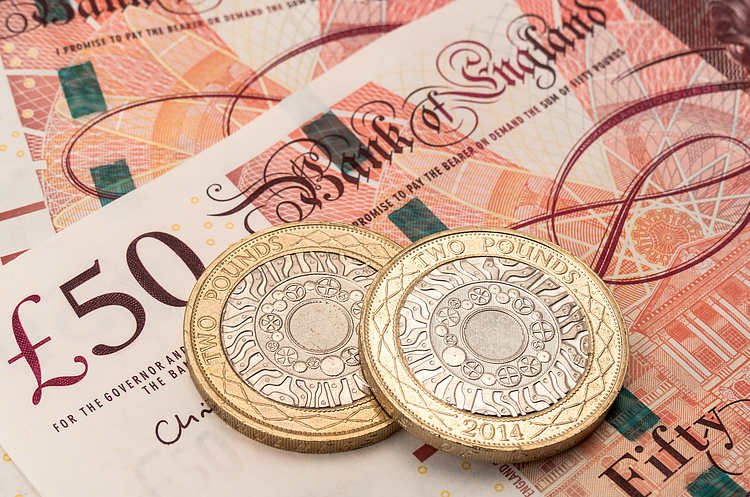- GBP/USD continues to move sideways below 1.3100 on Monday.
- UK data on Tuesday and Wednesday could influence Pound Sterling’s performance.
- The near-term technical picture fails to provide a directional clue.
Following the bearish action seen in the first half of the previous week, GBP/USD went into a consolidation phase. After closing virtually unchanged on Thursday and Friday, the pair continues to move sideways below 1.3100 to begin the new week.
British Pound PRICE Last 7 days
The table below shows the percentage change of British Pound (GBP) against listed major currencies last 7 days. British Pound was the weakest against the US Dollar.
| USD | EUR | GBP | JPY | CAD | AUD | NZD | CHF | |
|---|---|---|---|---|---|---|---|---|
| USD | 0.39% | 0.43% | 0.46% | 1.59% | 0.97% | 1.19% | 0.12% | |
| EUR | -0.39% | 0.10% | 0.11% | 1.23% | 0.55% | 0.79% | -0.30% | |
| GBP | -0.43% | -0.10% | -0.04% | 1.14% | 0.45% | 0.72% | -0.28% | |
| JPY | -0.46% | -0.11% | 0.04% | 1.11% | 0.47% | 0.65% | -0.32% | |
| CAD | -1.59% | -1.23% | -1.14% | -1.11% | -0.59% | -0.40% | -1.45% | |
| AUD | -0.97% | -0.55% | -0.45% | -0.47% | 0.59% | 0.29% | -0.80% | |
| NZD | -1.19% | -0.79% | -0.72% | -0.65% | 0.40% | -0.29% | -1.03% | |
| CHF | -0.12% | 0.30% | 0.28% | 0.32% | 1.45% | 0.80% | 1.03% |
The heat map shows percentage changes of major currencies against each other. The base currency is picked from the left column, while the quote currency is picked from the top row. For example, if you pick the British Pound from the left column and move along the horizontal line to the US Dollar, the percentage change displayed in the box will represent GBP (base)/USD (quote).
Upbeat macroeconomic data releases from the UK helped Pound Sterling stay resilient against its rivals on Friday. The cautious market mood, however, made it difficult for GBP/USD to gather bullish momentum heading into the weekend. Meanwhile, the data from the US showed that the Producer Price Index (PPI) for final demand rose 1.8% on a yearly basis in September, coming in above the market expectation of 1.6% and supporting the USD.
Bond markets in the US will remain closed in observance of the Columbus Day holiday on Monday. As a result, thin trading conditions could limit GBP/USD’s volatility during the American trading hours on Monday.
On Tuesday, the UK’s Office for National Statistics will release labor market data, which will include wage inflation readings. On Wednesday, the UK Consumer Price Index (CPI) figures for September will be scrutinized by market participants.
GBP/USD Technical Analysis
GBP/USD needs to break out of the 1.3000-1.3100 trading range to gather directional momentum.
In case GBP/USD rises above 1.3100 (Fibonacci 78.6% retracement level of the latest uptrend) and starts using this level as support, 1.3170 (Fibonacci 61.8% retracement) and 1.3200 (200-period Simple Moving Average (SMA), round level) could be seen as next resistance levels.
On the downside, an extended slide toward 1.2940 (static level) could be seen if 1.3000 (round level, static level) support fails.
Pound Sterling FAQs
The Pound Sterling (GBP) is the oldest currency in the world (886 AD) and the official currency of the United Kingdom. It is the fourth most traded unit for foreign exchange (FX) in the world, accounting for 12% of all transactions, averaging $630 billion a day, according to 2022 data. Its key trading pairs are GBP/USD, also known as ‘Cable’, which accounts for 11% of FX, GBP/JPY, or the ‘Dragon’ as it is known by traders (3%), and EUR/GBP (2%). The Pound Sterling is issued by the Bank of England (BoE).
The single most important factor influencing the value of the Pound Sterling is monetary policy decided by the Bank of England. The BoE bases its decisions on whether it has achieved its primary goal of “price stability” – a steady inflation rate of around 2%. Its primary tool for achieving this is the adjustment of interest rates. When inflation is too high, the BoE will try to rein it in by raising interest rates, making it more expensive for people and businesses to access credit. This is generally positive for GBP, as higher interest rates make the UK a more attractive place for global investors to park their money. When inflation falls too low it is a sign economic growth is slowing. In this scenario, the BoE will consider lowering interest rates to cheapen credit so businesses will borrow more to invest in growth-generating projects.
Data releases gauge the health of the economy and can impact the value of the Pound Sterling. Indicators such as GDP, Manufacturing and Services PMIs, and employment can all influence the direction of the GBP. A strong economy is good for Sterling. Not only does it attract more foreign investment but it may encourage the BoE to put up interest rates, which will directly strengthen GBP. Otherwise, if economic data is weak, the Pound Sterling is likely to fall.
Another significant data release for the Pound Sterling is the Trade Balance. This indicator measures the difference between what a country earns from its exports and what it spends on imports over a given period. If a country produces highly sought-after exports, its currency will benefit purely from the extra demand created from foreign buyers seeking to purchase these goods. Therefore, a positive net Trade Balance strengthens a currency and vice versa for a negative balance.








